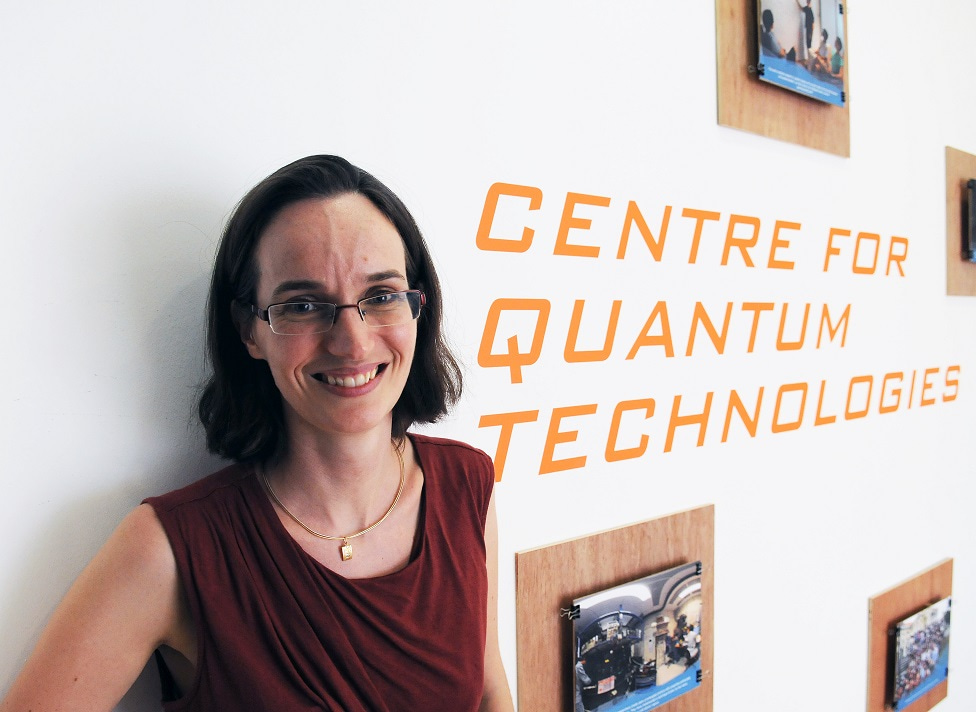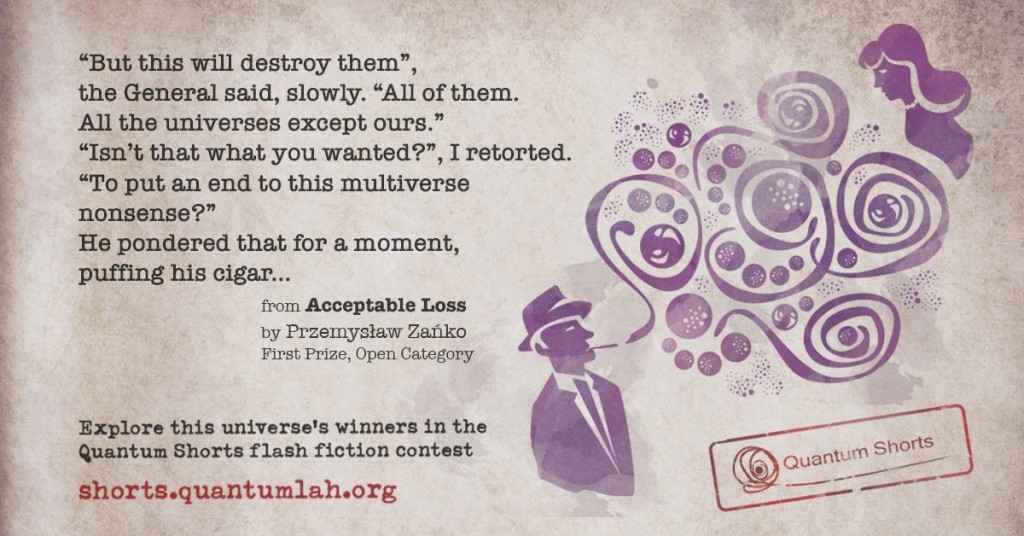
Jenny Hogan, Associate Director for outreach and media relations at the Centre for Quantum Technologies in Singapore, answer some question about the Quantum Shorts contest, in which short stories that draw from the ideas or themes of quantum physics are presented.
 How did you get the idea for the competition?
How did you get the idea for the competition?
The idea came from thinking about artistic projects we could start to spark interest in quantum physics. Our first contest in 2012 called for short films inspired by quantum physics. We knew there were a lot of people out there who could do something amazing with the challenge of melding physics and film, but the question was, would they enter the competition? It was a relief to end that first year with a strong shortlist. We swapped to written fiction the year after for variety, and we have continued alternating between calls for film and written fiction ever since.
The Centre for Quantum Technologies in Singapore organises the competition with support from consultants, media partners and scientific partners.
Who are the readers you have in mind for these short stories?
Anyone who likes to think about the intersection of science and culture! Once we asked our newsletter subscribers about themselves, and over 80% identified as having studied science in some way. The competition format diversifies the audience, because entrants can share their stories within their own circles. For example, our People’s Choice prize winner for 2015 told us that she asked people to vote for her story, and apart from asking friends and family she said that “because I live in a small town, I even asked the postman, the librarians, the teller at the bank, my doctor, and my dentist!”
The number of submitted stories is impressive. How did you manage to get people so involved?
Quantum physics is full of intriguing ideas and brimming with potential for technologies, so we’d argue there is a lot of fuel for creative fire. The story that just won the open category of our most recent fiction call (Acceptable Loss by Przemysław Zańko) plays with the idea of the multiverse — always a compelling plot device — alongside the thorny topic of how technology may be misused. By contrast, in the youth category, the runner-up story (End-User Agreement by Morgan Long) presented a humorous take on a prosaic aspect of technology: an end-user agreement.
However, even if we can offer material that inspires, we still have to make sure that people have heard about the competition. On that front, we benefit from working with great partners. Scientific American and Nature have been media partners for the competition for the past few years. They have enormous reach to a scientifically switched-on audience. We also work with other quantum centres who help to spread the word, and many of our contest judges have helped to advertise the competition, too. Our scientific partners are the Australian Research Council Centre of Excellence for Engineered Quantum Systems, the Institute for Quantum Computing at the University of Waterloo, the Institute for Quantum Information and Matter at Caltech, QuantIC, the UK Quantum Technology Hub in Quantum Enhanced Imaging and QuTech in the Netherlands.
We think that one of the reasons we see so many submissions in the fiction years is that there’s a strong community of writers who share news about opportunities. A flash fiction competition that’s quick and free to enter has obvious appeal.
How do you plan to further promote the initiative?
We’ve made various tweaks to the competition over the years to help promote it further. Our call for films in 2016 came with the promise, for the first time, of live screening events for shortlisted entries. These were held in prestigious venues in four countries – Singapore’s ArtScience Museum, the Glasgow Science Centre in the UK, Queensland Art Gallery | Gallery of Modern Art in Brisbane, Australia and Science World at TELUS World of Science in Vancouver, Canada, coordinated by our scientific partners in those places. This year we’re preparing an ebook of the best Quantum Shorts stories. We’d like to continue to build our partnerships to reward the entrants and bring their quantum films and fiction to wider audiences.

What do you hope the impact of Quantum Shorts will be?
We did some audience research on how readers responded to the stories after the last fiction competition. One of the questions was how reading the Quantum Shorts stories made people feel. It was multiple choice, and respondents could select as many options as they wanted. The selections were overwhelmingly positive, such as being more curious about quantum physics (18%) and being curious about the interaction between art and science (17%). Only 2% of the selections were negative, for respondents who felt that the competition had made them confused about quantum physics or pessimistic about quantum technology.
What is your tip for writers who would like to draw inspiration from physics for their work? And your tips for physicists who would like to give science-inspired writing a try?
The worst enemy of all writers is probably the blank page, so my tip is just to get started! You can edit and do more research as you go along. For writers wanting to draw inspiration from physics, read widely and read carefully. There’s a lot to learn about quantum physics on the web, but not all of it can be trusted so you have to vet your sources. A tip for physicists venturing into writing is to read more fiction and let their imagination run ahead of the facts. The story has to be compelling in its own right, not just be a vehicle for the science.
Which type of outreach programs you find are most effective to communicate quantum physics to the wider public?
You need different programs for different audiences, depending on your goals. Quantum Shorts builds an international network of enthusiasts, but we also find it effective to do things like participate in local science festivals. Through that, we’ve taken hands-on quantum experiments to shopping centres, engaging with a population that might not seek out science experiences. We have other programs to engage with students — from a comic for pupils from primary schools, to an intensive week-long camp for students reaching the end of high school who are making choices about what to study at university.


Please sign in or register for FREE
If you are a registered user on Research Communities by Springer Nature, please sign in